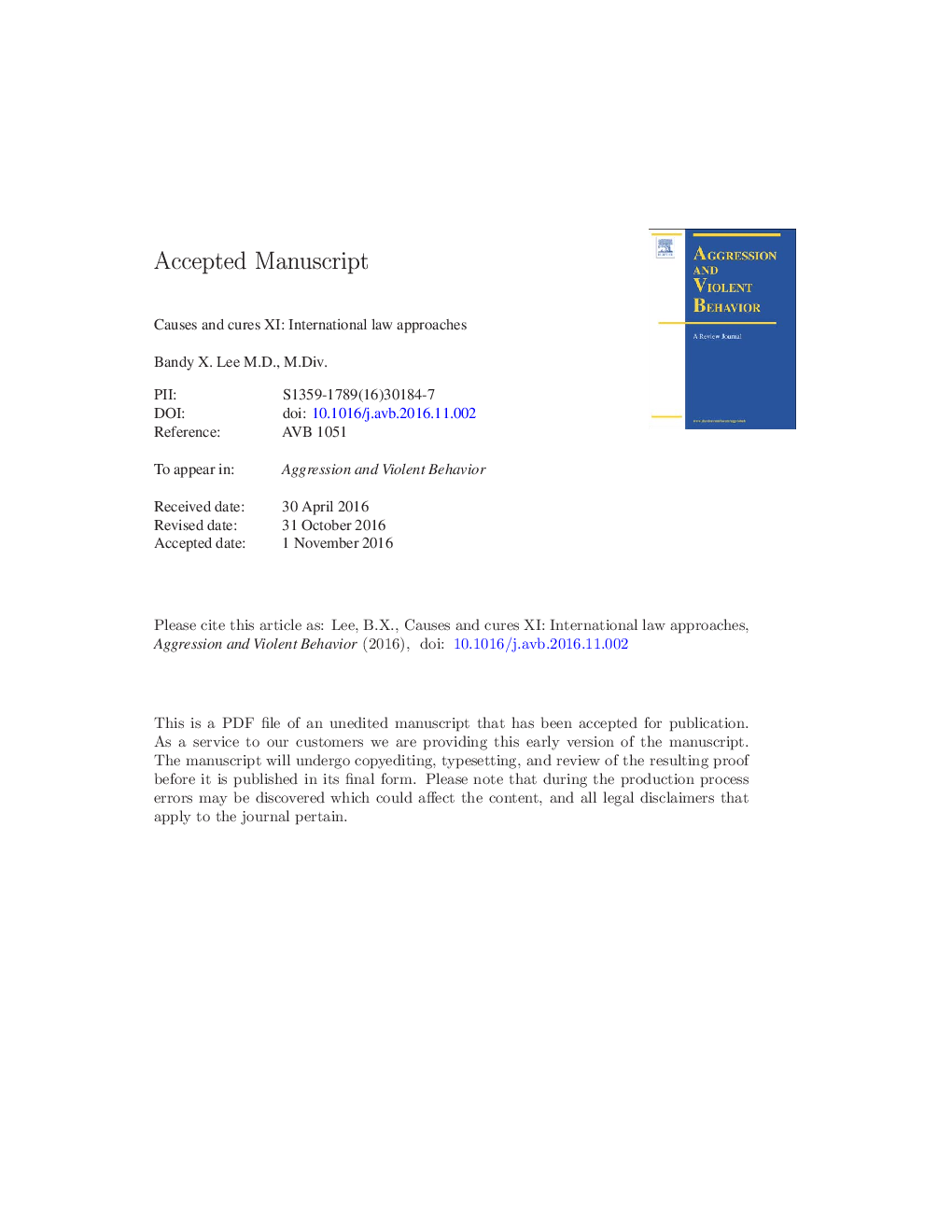| Article ID | Journal | Published Year | Pages | File Type |
|---|---|---|---|---|
| 4760158 | Aggression and Violent Behavior | 2016 | 26 Pages |
Abstract
The past several years have been a landmark moment for violence prevention, with renewed attention on the part of many international agencies, but especially the United Nations, with its adoption of the 2030 Agenda for Sustainable Development. The latter invites the world community to collaborate in an inclusive, long-ranging vision for the future, highlighting our interdependence and collective responsibility for humanity's future. A growing awareness that preventing violence does not just reduce death and disability but promotes creativity, economic growth, and general well-being is at the heart of this “movement”. An integration not only of the major disciplines but of various practical approaches is timely, and for this to occur, we require a broader overview of our existing societal structures. In this context, the remainder of this fifteen article series after a Global Health Studies course entitled, “Violence: Causes and Cures,” will review the mechanisms that society has used in an attempt to stem violence. This article, the tenth of the series, will briefly cover the criminal justice system in the United States and around the world. While the criminal justice system has played a major role in the effort to reduce violence, we learn that systemic failures and perceived injustices can diminish deterrent effect, while community-based intervention, individualized programs, and alternative justice approaches show greater promise. Similarly, punitive measures such as solitary confinement and the death penalty require reconsideration for reversing trends of self-defeating, irrational practices.
Related Topics
Health Sciences
Medicine and Dentistry
Forensic Medicine
Authors
Bandy X. M.D., M.Div.,
